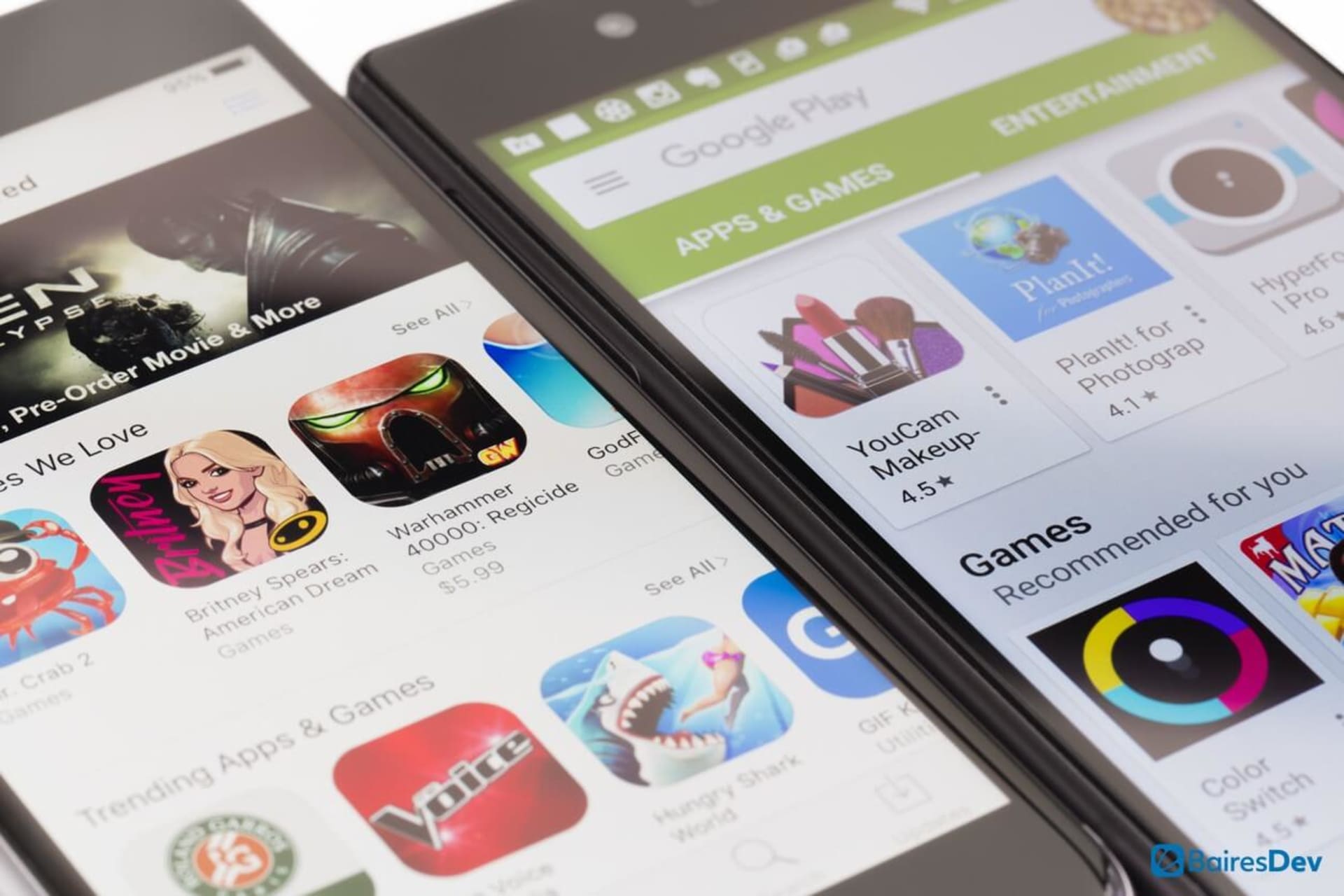Between 2019 and 2020, there were approximately 250 million app downloads every day. That, of course, is an enormous amount — but downloads alone don’t necessarily mean success. Are consumers actually using that app or are they downloading it and forgetting about it, ultimately offloading it or deleting it entirely? For a software development company, the sheer volume of downloads isn’t enough to turn a profit.
When you give your users a taste of your app before asking them to commit to it, will it actually encourage them to engage more meaningfully with your product? That’s precisely what you can test with Apple’s App Clips and Google’s Instant Apps. Here’s how the tech giants have sought to give businesses an additional way to attract users to their products.
Instant Apps in a Nutshell
Google first launched Instant Apps in 2017. According to the company, the purpose was mainly to benefit businesses. The idea was that users could try out apps instantly without having to download them. That way, they would already be able to experience the product without committing to it, hopefully giving them more motivation to give it a try.

There were, of course, benefits to the user, too, such as the fact that they wouldn’t have to take up space on their devices if they weren’t interested after the trial run. For example, they could test out games, which would normally take up a decent amount of memory. Initially, though, Google presented the idea as one that was most advantageous to developers.
This could serve as an app marketing strategy, much like seeing a pilot of a TV show or tasting a free sample at the supermarket before committing to watching the series or buying the food. It would help businesses stand out in a vast sea of competition.
In reality, Instant Apps do function this way — as a sort of “light” app that doesn’t actually possess all the features of the real deal. These native apps run on Android devices but must be accessed with links via a browser.
App Clips in a Nutshell
Apple launched its response to Instant Apps in 2020 — App Clips. Like Instant Apps, these mini-apps allow users to get a taste of the app before fully committing to it and can be immediately used prior to installation. Also similar to Instant Apps, they are considerably smaller than full apps and have limited features.
But Apple marketed App Clips a little differently from how Google envisioned Instant Apps. As opposed to simply offering a sample of the app, App Clips can also function independently. For example, they allow users to do things quickly, such as scanning a QR code at a restaurant and immediately being able to access the menu via the browser on their device.
But App Clips do have the original purpose of Instant Apps along with this — helping users sample apps before they download them.
There are some limitations, however. For instance, App Clips can’t access user data, including that found in your messages, photos, contacts, other personal files, and apps on your device. They also can’t see your health data and additional private information.
So, What’s the Difference?
| Criteria | App Clips (iOS) | Instant Apps (Android) |
|---|---|---|
| Main Role | Provide a quick, lightweight version of an app without full installation | Allow users to test a part of an app before installing the full version |
| Platform | iOS (Available on iOS 14 and later versions) | Android |
| Size Limit | Less than 10 MB | Up to 15 MB |
| User Experience | Designed to be fast and focused, offering a part of an app’s functionality | Offers native app experience without installation, allowing to access single features or services |
| Access | Can be accessed via Safari, Maps, Messages, QR codes, NFC tags, App Clip Codes | Accessible via URLs, Google Search, Google Play, NFC, and QR codes |
| Development | Developed as a part of the iOS app using Xcode | Developed as a part of the Android app using Android Studio |
| Key Features | Supports Apple Pay and Sign in with Apple | Can access hardware features of the device |
| Privacy | Follows Apple’s strict privacy guidelines | Follows Google’s privacy policies |
| Discoverability | Can be discovered and shared in various ways, not visible in the App Store | Discoverable in Google Play Store |
| Integration | Can be integrated into websites, emails, texts, and physical locations (like stores) | Can be integrated into websites, emails, texts, and physical locations (like stores) |
| Purpose | Meant for quick tasks, such as ordering food, renting a scooter, or making a payment | Meant for quick tasks or preview before downloading full app |
| Installation | No need to install full app unless user decides to download | No need to install full app unless user decides to download |
| Lifespan | Automatically deleted after a period of inactivity | Automatically deleted after a period of inactivity |
It might seem like App Clips and Instant Apps are two sides of the same coin, aside from the fact that they function on Apple and Google devices respectively. And while they are quite similar in a number of ways, they also diverge in several respects.
Technical Limitations
First, while App Clips and Instant Apps are both much smaller versions of fully fleshed-out apps, they do have different size limits. Instant Apps are limited to 15MB, while App Clips are limited to 10MB. This means that Instant Apps can be 50% larger, giving developers a little more flexibility in terms of the features they can include.

User Experience
Another key way the 2 products differ is in their user experiences. Via a single app, a business can offer multiple experiences through multiple different App Clips. For example, a different App Clip may be triggered depending on different parameters, such as a user’s location, and show features related to that parameter.
Instant Apps, on the other hand, are static — they will provide the same experience to every single user, no matter what the additional factors at play.
Access
How can you access each of these mini-apps? Instant Apps are exclusively available in the Google Play Store. But App Clips aren’t accessible through Apple’s App Store.

Instead, users can launch App Clips through triggers like a QR code, an NFC tag, a link — such as one sent in an iMessage or text — a Safari app banner, a map, and more. That means there are more options for users to be able to discover and interact with App Clips. Plus, sometimes, they will be triggered without the user initiating the interaction.
Payment Processing
A final point of contrast is payment processing. Instant Apps don’t support payments in any way — this is strictly prohibited. App Clips, however, do. Payments can be processed automatically through Apple Pay, as long as the user is already logged into their Apple account.
Both App Clips and Instant Apps offer ample opportunities to businesses and app creators. But they have yet to become as pervasive as Apple and Google would like. In the case of Apple, because the rollout coincided with the COVID-19 pandemic, the timing may have hindered its immediate success. In the future, we could see more businesses and users embracing the concept of the trial- or mini-app and its many advantages.







